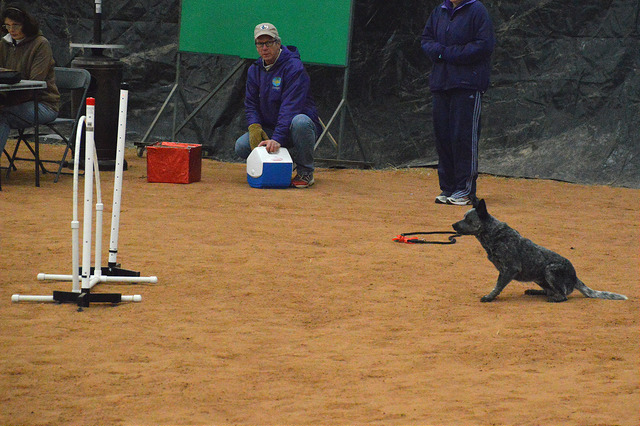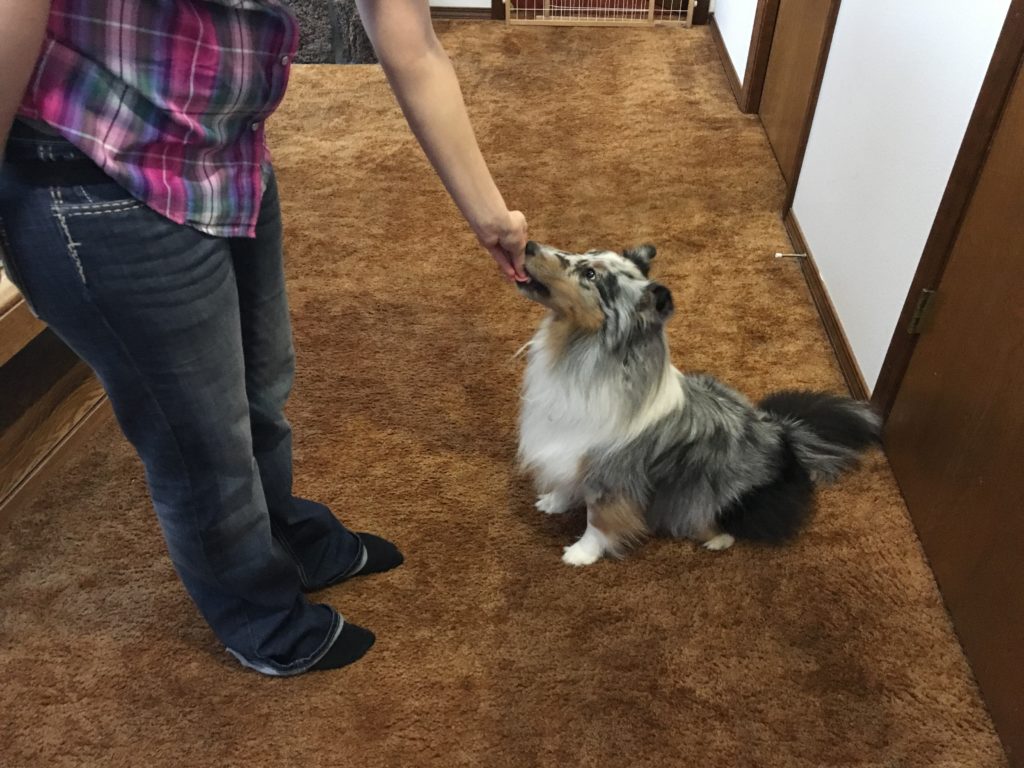Teaching your dog a reliable stay is important. A stay not only makes your life easier, but can save your dog’s life. It can also be a very frustrating experience. You may feel as though no matter what you do, your dog just won’t stay longer than a few seconds. Don’t feel bad, stay is a hard cue because it’s asking your dog for a lot of self-control, which is something most dogs do not naturally have. With a bit of training, however, any dog can have a solid stay.

Why Your Dog Breaks His Stay
Dogs break their stay for two main reasons:
- Your dog doesn’t understand what you are asking with the word “stay.”
- They have not been reinforced enough for staying.
- When they break their stay, they are rewarded with something better than what you have been giving as a reward, i.e. chasing the rabbit, getting another dog’s food, or simply getting to be with you. For example, start line stays in agility are hard to teach because the dogs are super excited to do the course.

There are always extreme situations that may also cause your dog to break his stay. For example, something startles him or he feels he is in danger if he stays in that spot. These are unusual situations, however.
Tips To Helping Your Dog Stick That Stay
In order to get your dog to stop breaking his stay, you need to address the three reasons above. For the first one, if your dog is breaking his stay almost immediately or when there are no real distractions around, then you need to go back to basics and reward him more for staying in place. In this case, your dog probably doesn’t understand the concept of the cue stay.
First – break up distance (how far away from you they are) and duration (how long they are in the stay). These are two big concepts and it’s easier on your dog at first if you work on them separately and then combine them.
Second – reward more often. In order for stay to be a success, it needs to be rewarded a lot! So make sure you are not fading those treats/rewards too quickly. If your dog was doing well and suddenly is not, you may have dropped to a reward frequency that was too low for your dog’s current training level. For example, let’s say you are rewarding your dog every 15 seconds for a duration stay. Then you jumped to rewarding every minute. Most dogs would break if you made that big of a leap. Instead, try going from 15 to 25 or 30 seconds. This intervals will depend on the dog, of course.

Third – take breaks. How long are you working on stay? Remember you are asking for a lot of self-control from your dog, so don’t work on stay for an hour. Instead, work on it in short intervals, no more than ten minutes, maybe less at the beginning, and follow it with something your dog enjoys, like fetch.
Fourth – increase distractions slowly. This one ties into the second reason dogs break stays. You need to build up distraction slowly, in line with how well your dog’s self-control has developed. Don’t work on stay for a week and then expect to do it in an open field with bunnies flying by. Start with something as simple as another person walking by or a toy being placed (not thrown) on the floor. Remember, sometimes your stay cue is fighting against a dog’s instincts (like in the case of a bunny hopping by), so you need be patient with your dog while he is learning to turn that off and listen to you instead. Again, this depends on the dog.
You will know you have reinforced your stay enough if your dog can resist even the most tempting distraction. Just last night my youngest Sheltie was in a mat stay while I worked another dog in agility – a feat in itself considering he is a guarder and reactive. Then a bird flew in the arena and I thought he was done for. He looked at the bird, but he didn’t break that stay. He got several kibbles for that! So, it is possible even for dogs with almost no self-control. It just takes time and patience.
